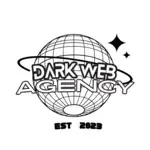The dark web exists on the internet beyond the reach of search engines, necessitating access through an anonymizing browser such as Tor.

Dark web definition
The dark web, unindexed by search engines, is notorious for criminal activities. Research by Daniel Moore and Thomas Rid revealed that 57% of 2,723 live dark websites in 2015 hosted illicit material. A 2019 study by Dr. Michael McGuires noted a 20% rise in dark web listings potentially harmful to enterprises since 2016, comprising 60% of non-drug listings.
On the dark web, purchases range from credit card numbers to drugs and hacking tools. Despite its illegal aspects, the dark web has legitimate spaces like chess clubs and BlackBook, a social network dubbed the “Facebook of Tor.” Accessing the dark web requires the Tor browser, offering anonymity but resulting in a challenging and slow experience. The dark web provides a unique view into both criminal and lawful aspects of human behavior.
Deep web vs. dark web: What’s the difference?
While “deep web” and “dark web” are sometimes used interchangeably, they differ. The deep web encompasses unindexed internet content, like paywalled or restricted material. Examples include medical records, fee-based sites, and confidential corporate pages, constituting around 96% to 99% of the internet. In contrast, the dark web, intentionally hidden, requires the Tor browser for access. Its size is uncertain, but estimates suggest about 5% of the total internet, and not all activities on the dark web are illicit despite its ominous name.
Dark web tools and services
The Into the Web of Profit report outlined 12 categories of tools or services that pose a potential risk for network breaches or data compromises.
- Infection or attacks, including malware, distributed denial of service (DDoS) and botnets
- Access, including remote access Trojans (RATs), keyloggers and exploits
- Espionage, including services, customization and targeting
- Support services such as tutorials
- Credentials
- Phishing
- Refunds
- Customer data
- Operational data
- Financial data
- Intellectual property/trade secrets
- Other emerging threats
The report also outlined three risk variables for each category:
- Devaluing the enterprise, which could include undermining brand trust, reputational damage or losing ground to a competitor
- Disrupting the enterprise, which could include DDoS attacks or other malware that affects business operations
- Defrauding the enterprise, which could include IP theft or espionage that impairs a company’s ability to compete or causes a direct financial loss


BE CAREFUL STAY ALERT
Awesome blog! Is your theme custom made or did you download it from somewhere? A design like yours with a few simple adjustements would really make my blog stand out. Please let me know where you got your theme. With thanks